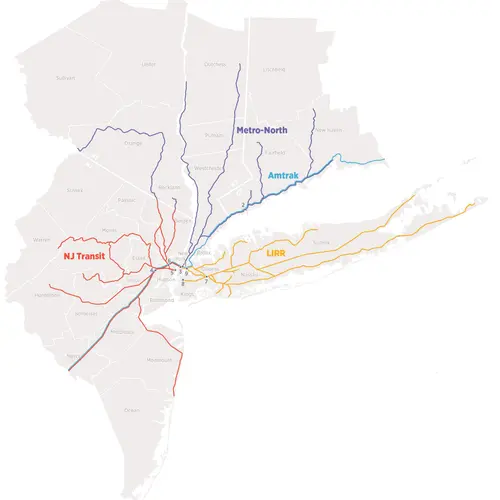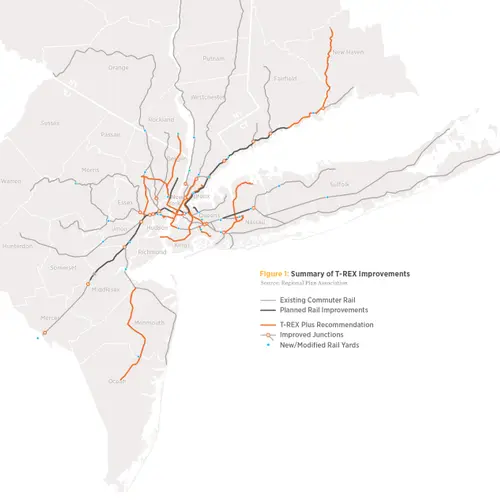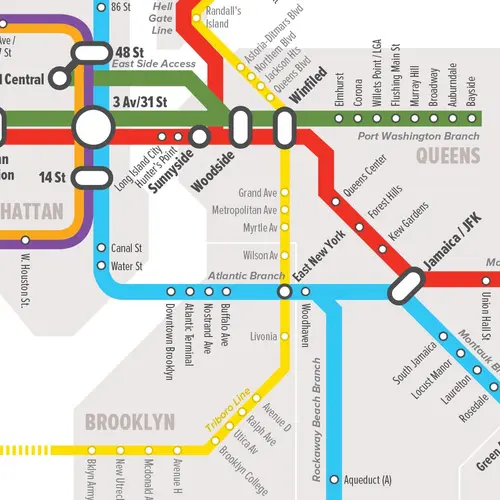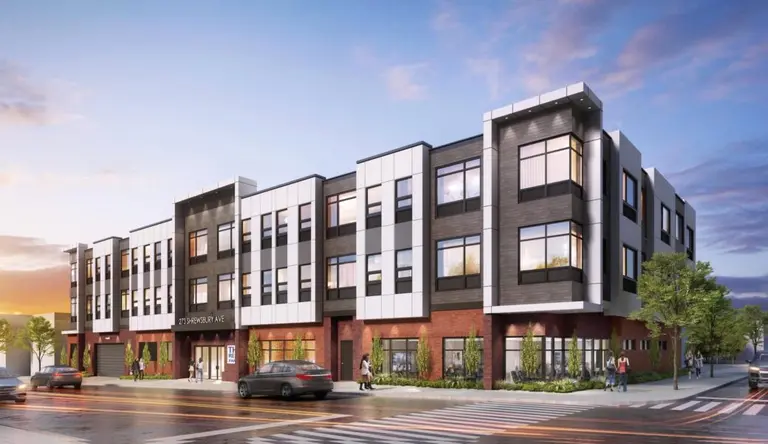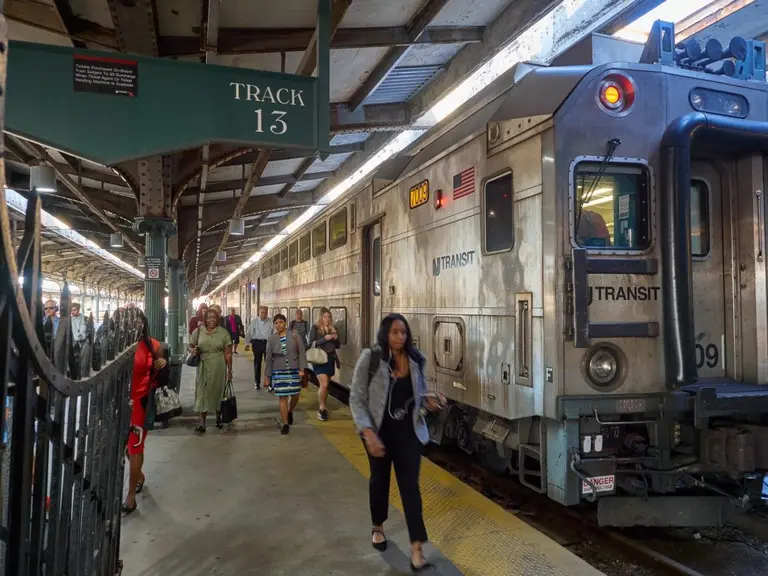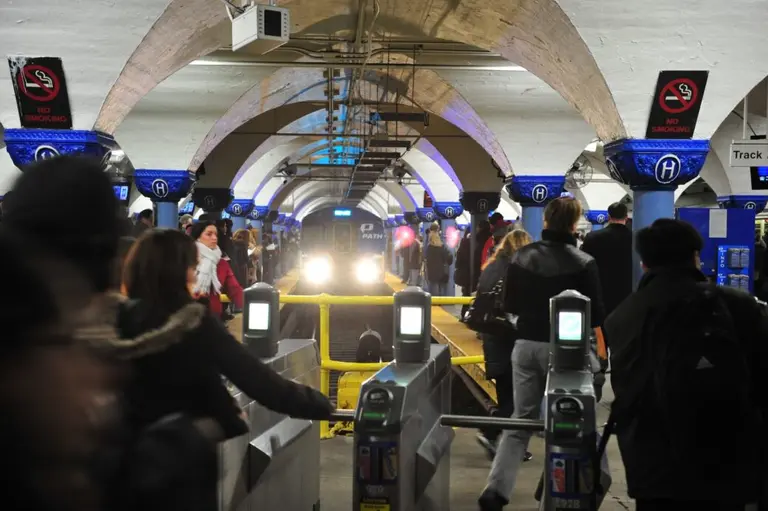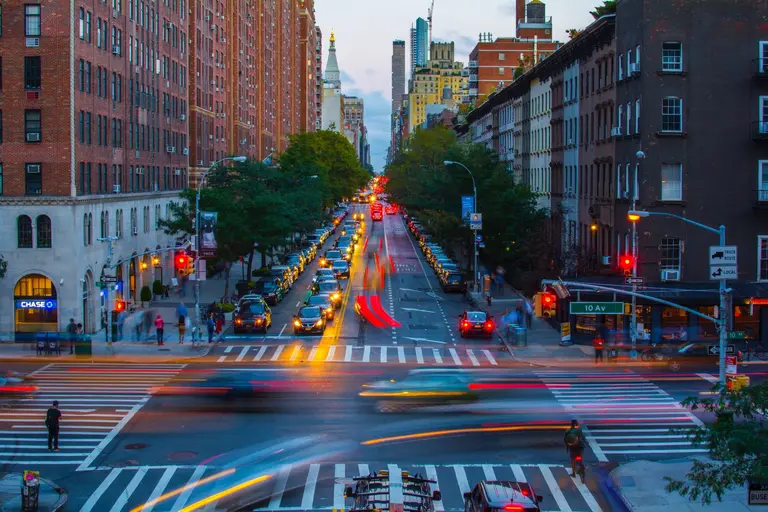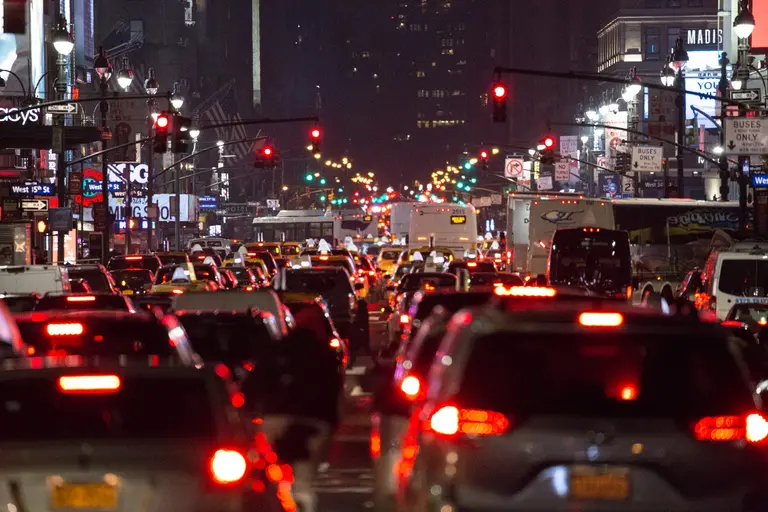New RPA report calls for combining LIRR, NJ Transit and Metro-North into one rail network
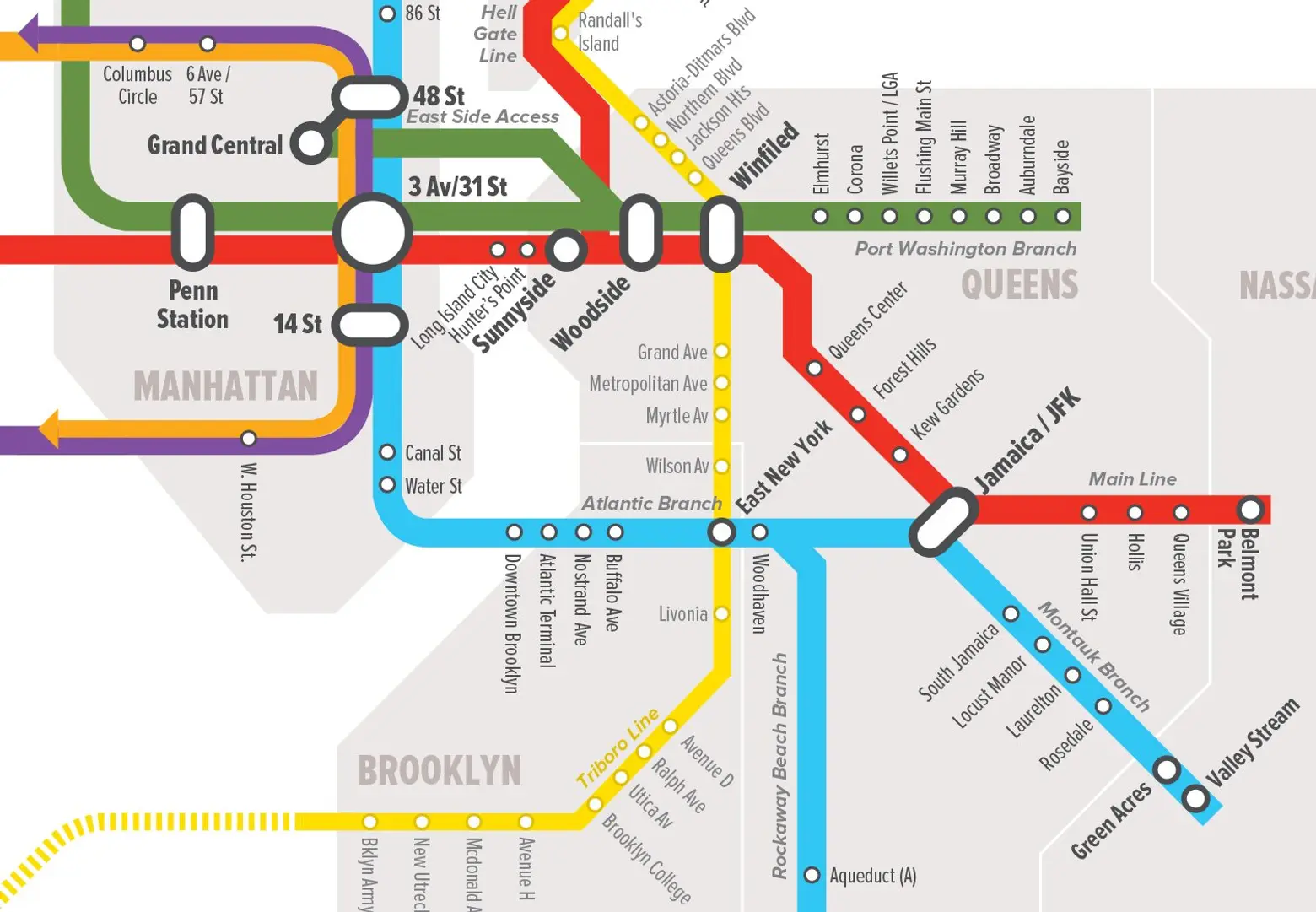
A map showing T-REX’s new crosstown connections, via RPA
When NYC’s three commuter railroads–the Long Island Railroad, New Jersey Transit, and Metro-North–were built more than a century ago when the metropolitan area was less than half its current size. Today, the systems are crumbling, both in their physical infrastructure and politics. The latest suggestion for how to fix the issues comes from a new Regional Plan Association report that wants to take advantage of the fact that these railroads “share an amalgamation of rail lines” and thereby create one integrated regional rail network. Dubbed T-REX, short for Trans-Regional Express, the 30-year, $71.4 billion proposal would add 60 new train stations and more than 200 miles of new tracks.
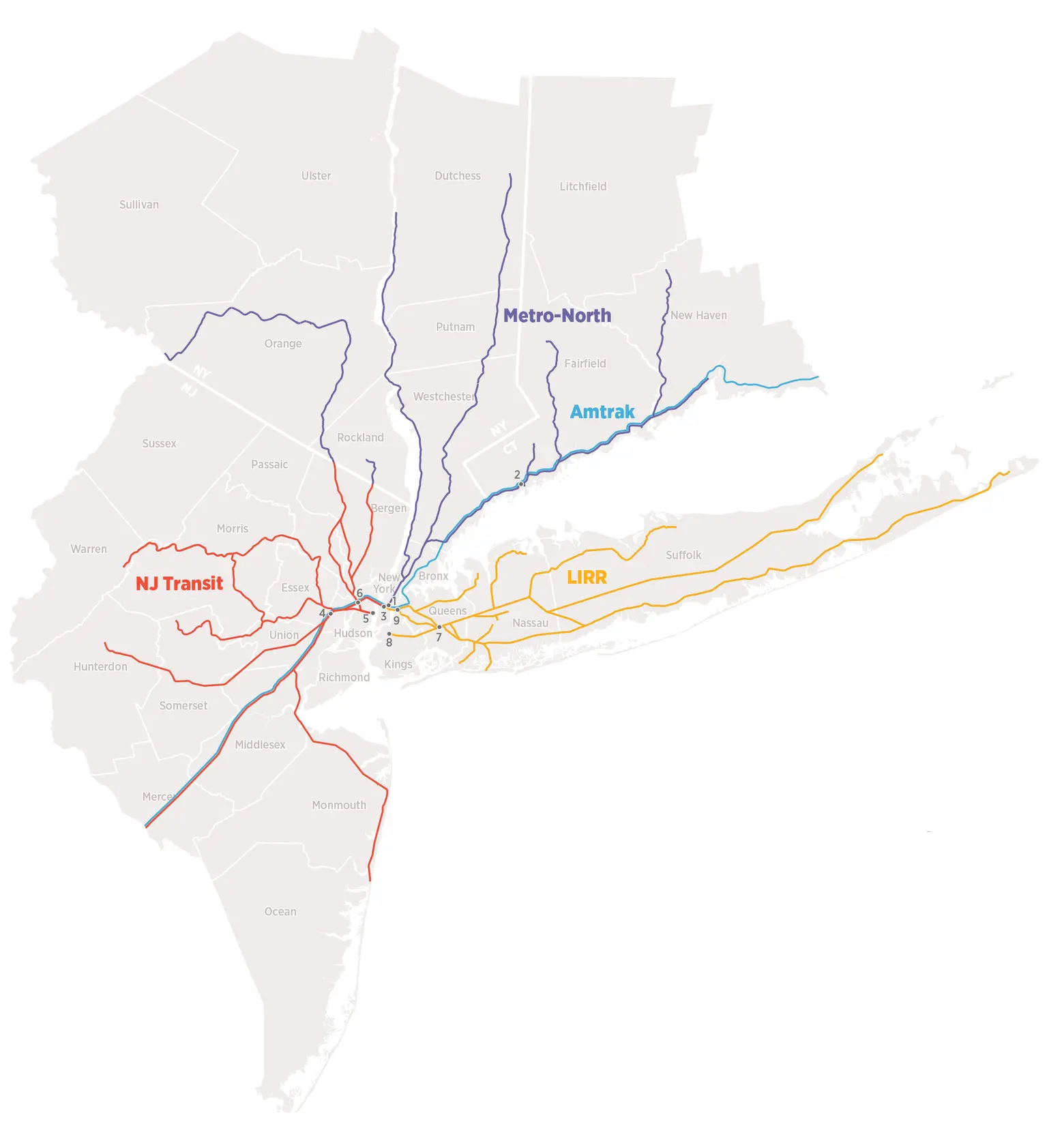 Map of the region’s three current commuter railroads and Amtrak
Map of the region’s three current commuter railroads and Amtrak
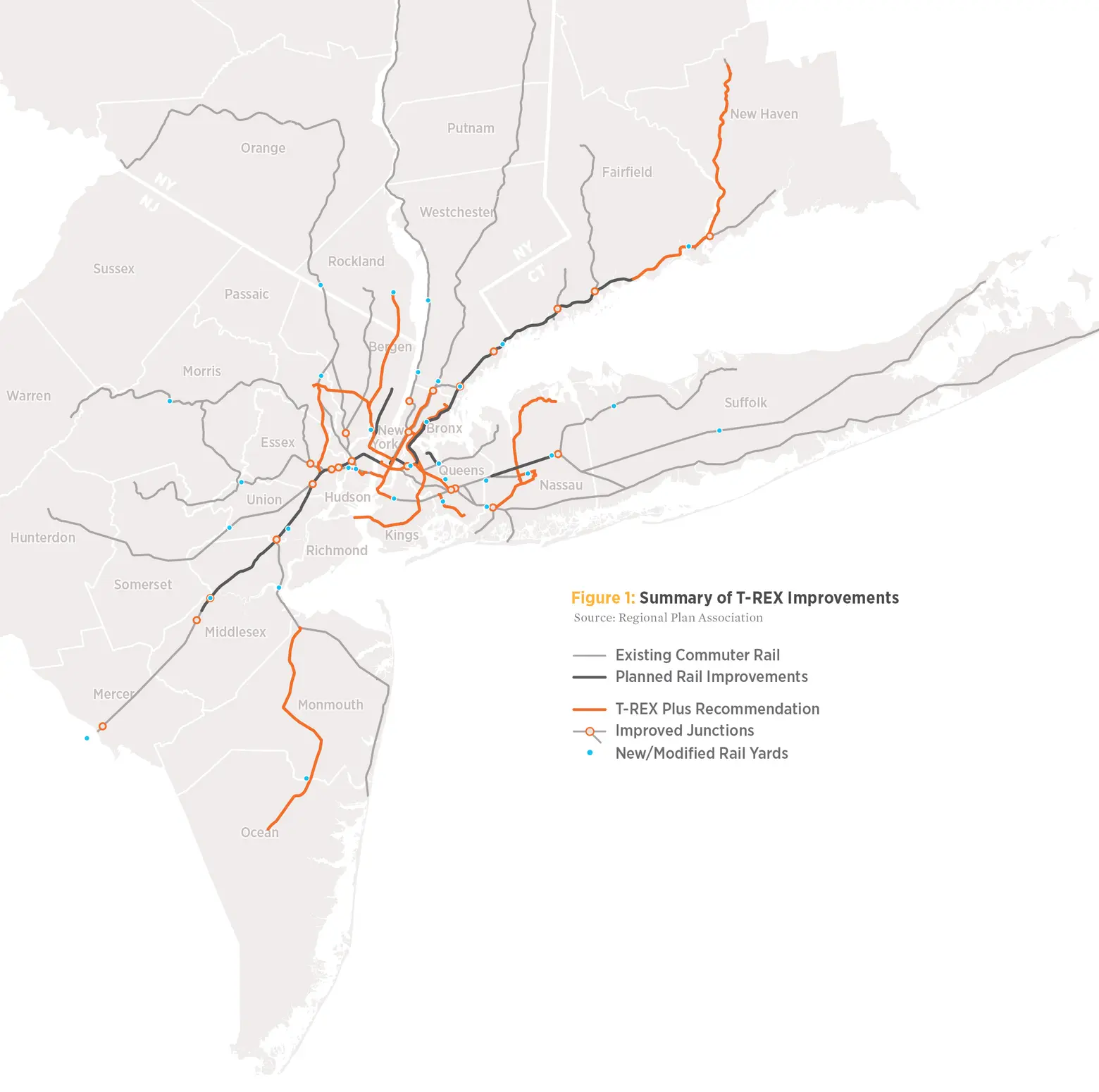 The proposed T-REX system
The proposed T-REX system
RPA’s impetus comes not only from the fact that the rail systems are in disrepair but from their estimations that by 2040, the NYC metropolitan area will add 850,000 jobs and 1.8 million residents.
They’ve divided the plan into three phases. The first would build upon Amtrak’s current Gateway project to build new rail tunnels under the Hudson River and expand Penn Station. The RPA would extend those tunnels and tracks under the East River, providing new crosstown service to connect NJ Transit with the LIRR. In addition to Penn Station serving as a “through-running station,” they’d add a new station on 31st Street and Third Avenue to “provide suburban commuters access to southeast Midtown.”
However, the RPA predicts that before 2040, these new Gateway/Crosstown tunnels will also be at capacity. Therefore, phase two includes another set of trans-Hudson tunnels, these running from Union City, NJ to 57th Street in Midtown. As they explain:
Beyond providing new rail service to many New Jersey communities, this second phase of the proposed regional rail network would provide a new north-south transit service on the East Side of Manhattan from 57th Street, running south under Third Avenue, and making four to five stops to Lower Manhattan, a corridor that currently is only served by the Lexington Avenue Subway. This service could obviate the need to construct the lower portions of the Second Avenue Subway.
This “Manhattan Spine” would connect to the Crosstown line at the 31st Street hub and then continue to run downtown with stops at Fulton and Water Streets. It would then head into Downtown Brooklyn, with a transfer available to the Long Island Rail Road at Atlantic Terminal.
The third and final phase extends the Manhattan Spine uptown to connect to the Bronx, Westchester, the Hudson Valley, and Connecticut, by “paralleling Metro-North’s Park Avenue Tunnel along Third Avenue, providing a new express track through the Bronx from Mott Haven to Woodlawn, and seamlessly connecting the Mid-Hudson and Connecticut into the new regional rail system.”
This also entails a third new set of trans-Hudson tunnels, which are envisioned to replace the century-old uptown PATH and its Hoboken terminal, replacing them with new stations in Hoboken and the Heights section of Jersey City, connecting with NJ Transit.
Currently, the three systems have a combined 390 stations and more than 2,000 miles of track–the largest and farthest-reaching commuter rail network in the country. But trains often run only once per hour. The RPA claims that T-REX trains would run consistently every 15 minutes during the day and every 10 minutes during peak periods. Similarly, they say, “The three new core trunk lines would operate with a frequency of up to 2.5 minutes in the peak and 5 minutes in the off-peak, providing service similar to Manhattan subway lines.”
You can read the full RPA report here (pdf).
RELATED:
